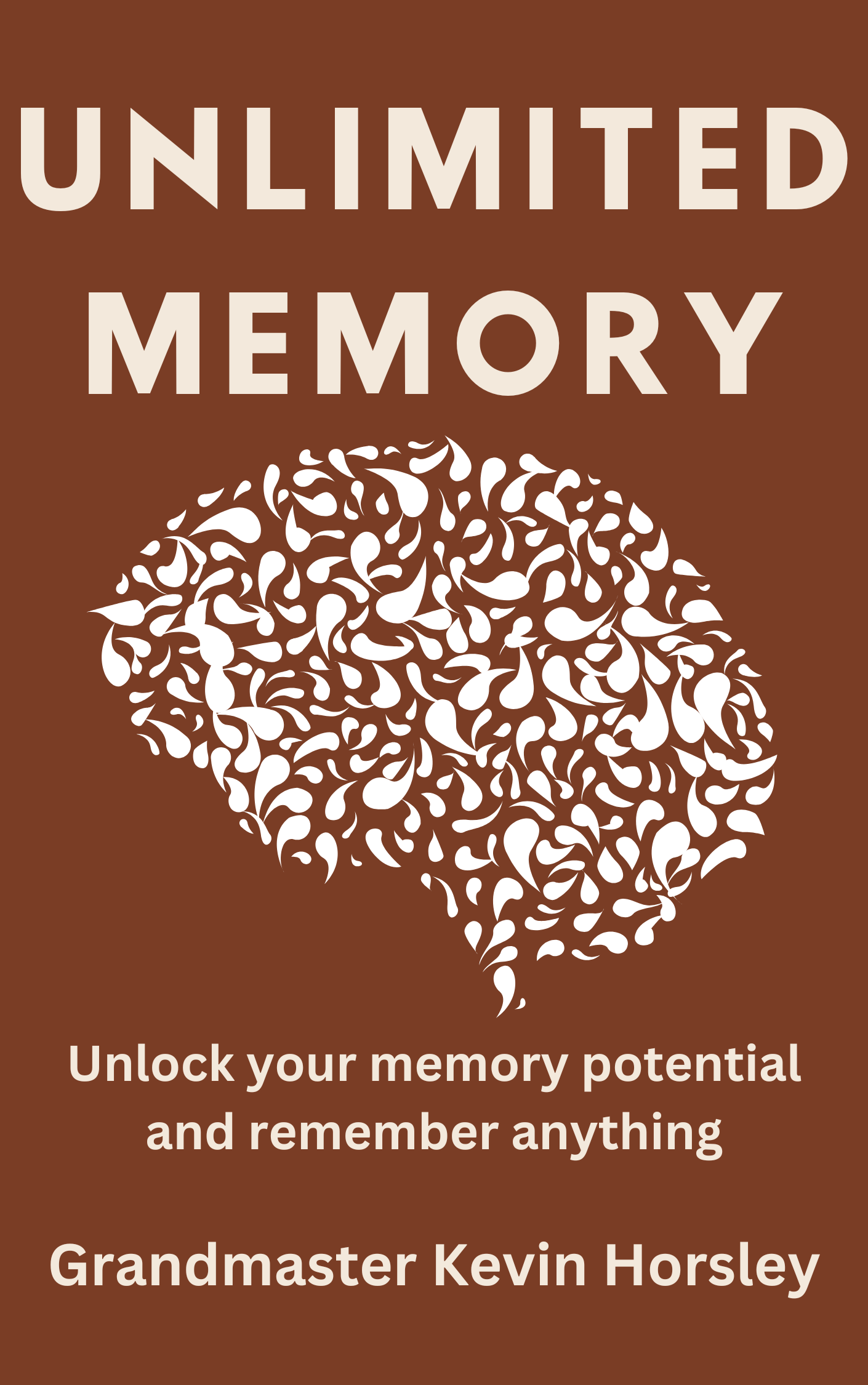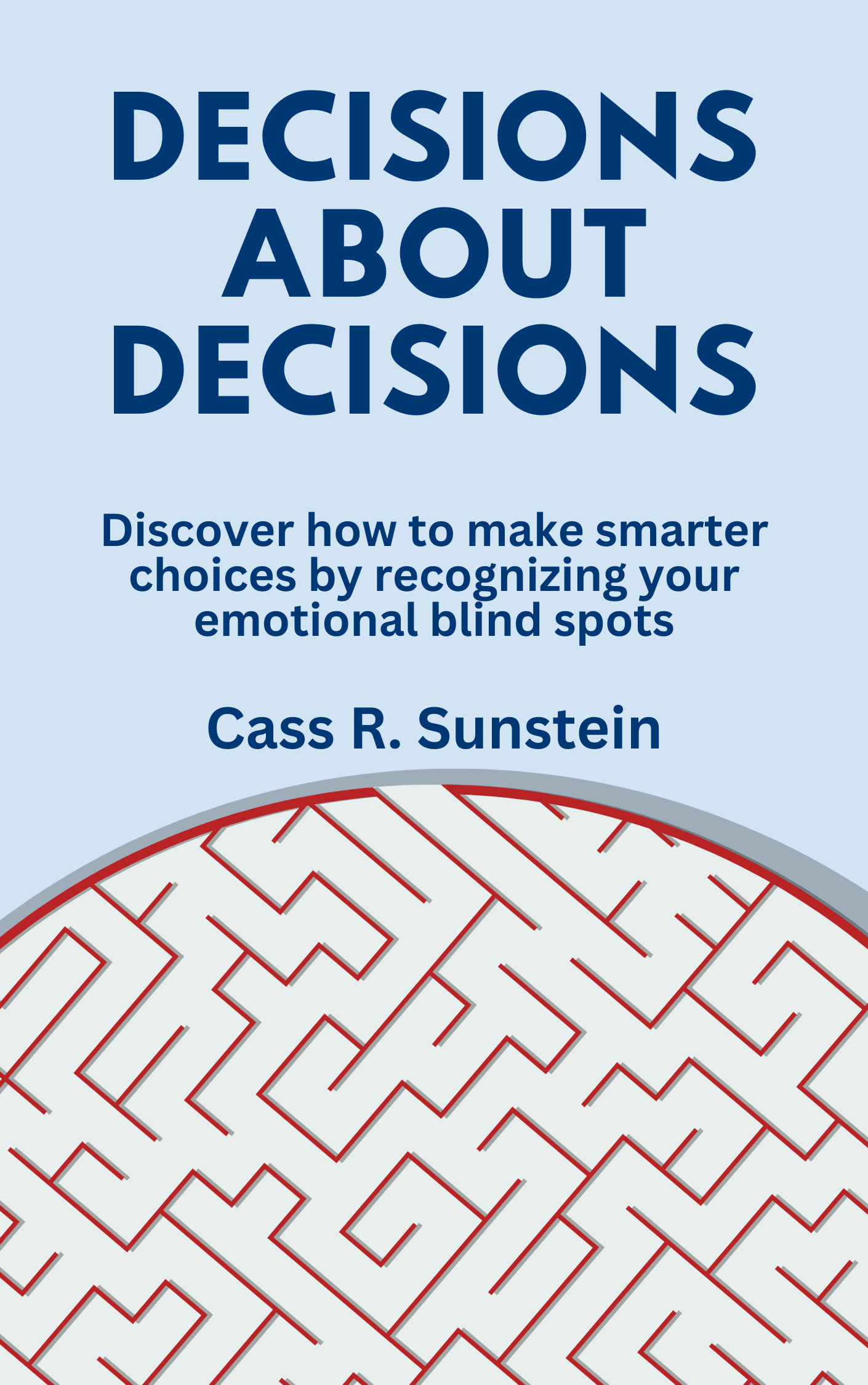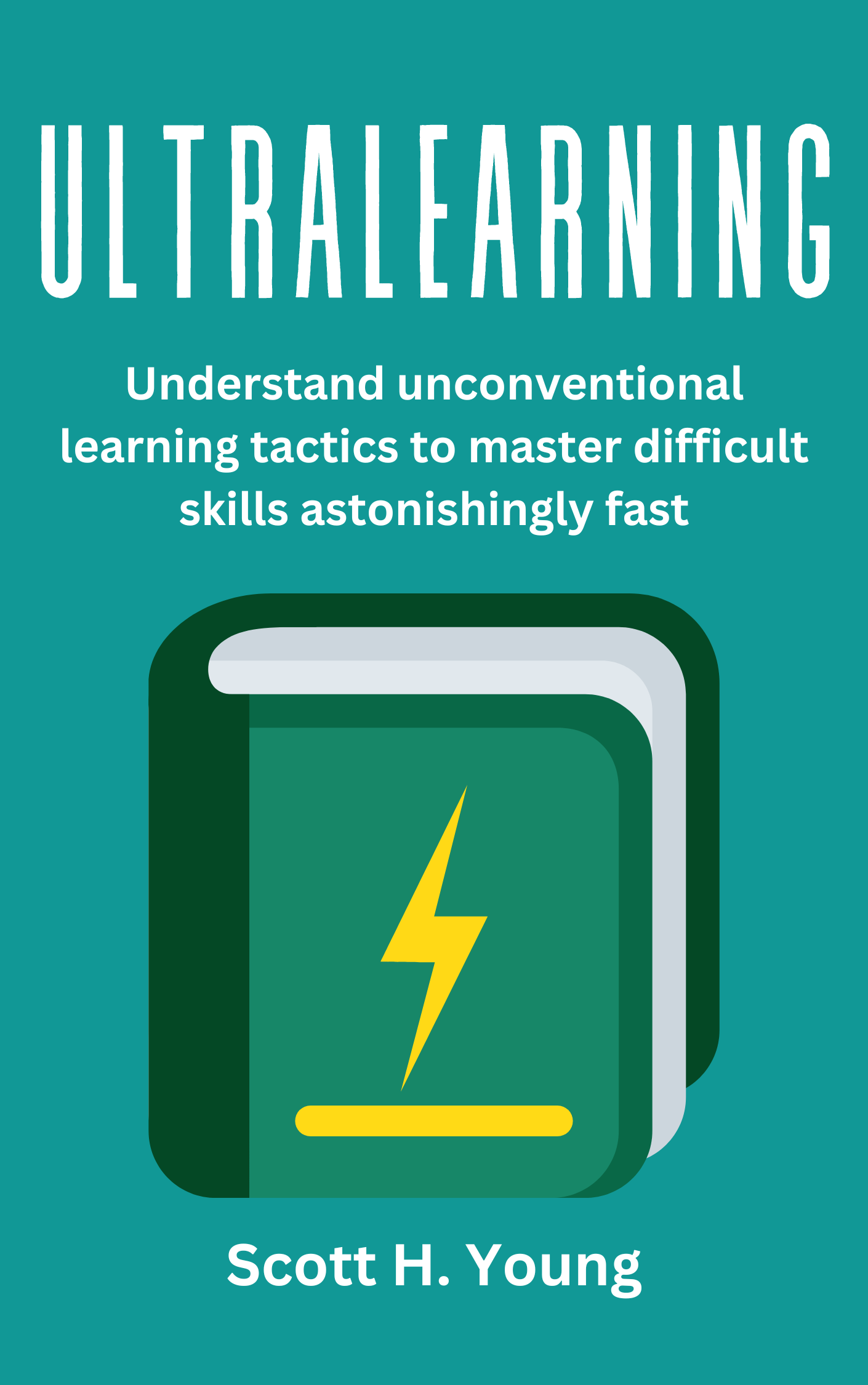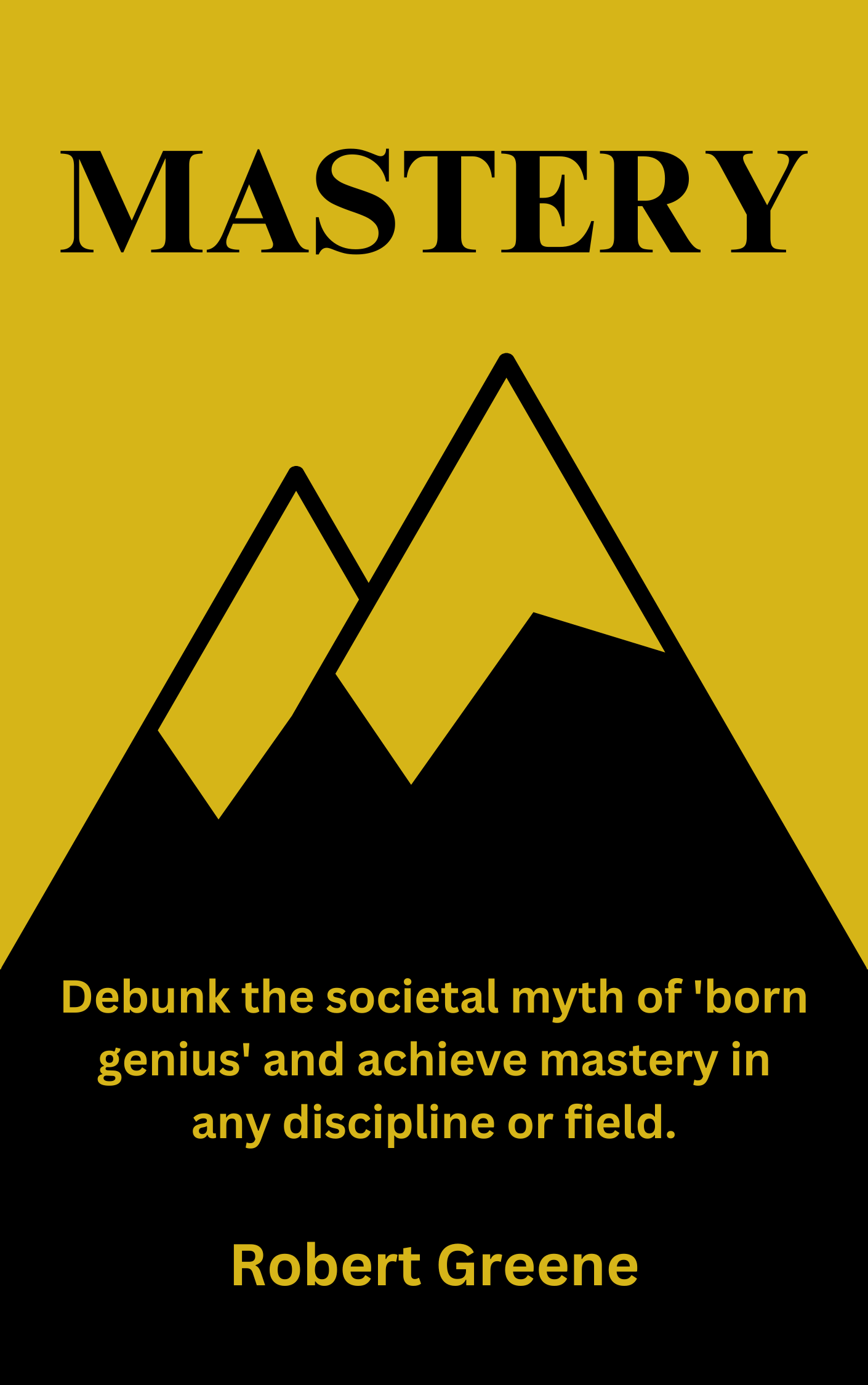Introduction
Who’s the author of this book? We just told you, but you don’t remember? Thought so!
Imagine never again suffering this frustration of forgetting info! We would KILL for that! But not really, cause y’know: we could just read this book! This isn't another brain hack repeating the same tired memory aids. Kevin Horsley, the author, is going OFF SCRIPT to hand you his cognitive wildcard - a singular mindset shift that obliterates conventional memory hacks forever.
In Unlimited Memory, you'll unravel the outrageous untold story of how a former dyslexic wrote his own mental operating system from scratch. No expensive tutors, no decade-long monks' discipline - just a rebellious spark and the audacity to question why memory needs to be so damn hard.
Horsely explains there are four keys (or Cs) to improving your memory. Concentration, the ability to Create imagery and Connecting concepts together, and Continuous use.
Now, forget everything else you know about memory improvement and come awaken your secret power lying dormant.
Wherever you are, be there
Okay, the first C! Concentration. The ability to focus one's attention. Super important for memory! Thankfully, it’s like a muscle - with the right techniques, you can build it up. And what’s the best technique? Killing the enemy, AKA, internal conflict!
Internal conflict is the opposite of concentration. When your inner voice gets excessively negative, filling your mind with doubt and anxiety, internal conflict happens. And conflicted-you is NOT good with concentrating! To come back from it, we give you the PIC/P.I.C. method. Let's say you need to study for an exam on European history. Here’s how you prep in the PIC way:
Purpose – Define the why! Write it down, even. Here, your purpose is to learn, and do well on the exam.
Interest - If you like it, you will automatically remember it. If you don’t, you gotta create interest by looking for connections to topics you already enjoy, like military strategy or something.
Curiosity - Ask yourself questions that pique your curiosity, like "What are the unknown stories about this time?"
Equally useful is to just stop worrying. Get rid of the ‘what ifs’ and all. And while you are at it, also get rid of the self-sabotaging lies you tell yourself. "I'm just not a details person." "I can't concentrate to save my life." Shut up! Repeat these enough and they become facts. Which they’re not! Instead, use affirmations, and watch them manifest.
Next, stop deluding yourself that you can multitask. The human brain cannot. Simple!! What you call multitasking, is really just rapidly switching between tasks in a scattered way. It’s like putting your brain on drugs - it slows you down by 50% and increases mistakes. Try and make peace with the present moment, only. Do one thing at a time, and do it with full immersion. Cool?
Up next, C #2 – Create Imagery!Train Your Creativity, Train Your Memory
Whenever you struggled to remember something, the problem likely wasn't your memory, but rather how you consumed that information. You see, your brain doesn't store facts like a camera taking photos. To get it on that level, use your imagination.
Like when reading a novel - you vividly picture the words, right? That's because your creative mind automatically transforms those words into mental movies. But often when it comes to textbooks, lectures, or dry informational content, we approach it passively.
And that’s when you need to become a director and bring that boring content to life. How can you do this? By using your senses! All 5, if you want the best. Try the SEE or S.E.E. principle:
S - Senses to create more vivid memories. Don't just read about a horse, but actually imagine its powerful gait, its earthy smell, its neighing. The more senses you layer in, the stickier the memory becomes.
E – Exaggerate images to make them more memorable. A regular-sized strawberry is pretty forgettable. But a strawberry the size of a house? Your mind can't help but take notice!
E - Energize images by giving them action and movement. Which is more memorable: a static photo of your last vacation, or visualizing those moments vividly replaying like a movie scene?
Even abstract concepts can be made memorable. Look for similar sounding phrases to represent the abstract term. You could also break it into smaller components to visualize. For example, to remember the Spanish word for sun "sole", you could picture the sun burning the sole of your foot. Go creative with translating names, vocabulary, and complex topics into vivid, multi-sensory movies. Once you make a habit of it, you'll be able to apply it to anything from country capitals to formulas and beyond. The more outrageous you make the mental imagery, the more it will stick. Have fun!
Moving on to C #3. How do you think Connection helps with memory?Find Yourself a Storage Compartment
Any chance you’ve seen the BBC Sherlock series? Sherlock has a mind palace – a mental room sort of thing, where he neatly files all the information. We just learned how to make information more memorable by Creating imagery. Now we need a mind-palace to create files, for pictures. There’s multiple ways.
First up, introducing the Body Method! It involves connecting the imagery you want to remember by associating it with different parts of your body, which you are very familiar with from long-term experience. This way, you leverage your long-term memories to encode the new, short-term information more effectively into a longer-lasting medium-term memory. Your body serves as a familiar "storage compartment" that you interact with daily, making it an ideal canvas for creating mental associations. There are other versions of this: The Car Method, The Journey Method. Point is to use something from your long term, that can serve as a storage compartment.
An example? Say you want to remember the 10 types of Intelligence. Heavy, abstract info that’s very likely to leave your head seconds after you hear it. How do you use Connection here?
Creative Intelligence could be remembered by associating it with the imagery of you painting a bulb; painting is creative, bulb is the universal symbol for intelligence. Now connect this imagery to a body part. Feet. You’re painting the bulb on your feet. Try forgetting then! For physical intelligence, you can use the imagery of abs, connected with your stomach. Get the idea?
You can use this to you remember stuff for tests, work, your grocery list - pretty much any kind of list or important info. Just get creative and make it over-the-top funny. And follow those SEE principles – senses, exaggerate, energise!
That was simple, right? Let’s get a little specific now. How do you use Connection for numbers and names?
007 is James Bond
Horsley can remember a 50-digit random number in less than 20 seconds and 100 digits in 45 seconds. No, he’s not a mutant; he just has an awesome strategy. Let’s call it the number-word strategy. The principle behind it is this: lack of meaning and context makes memorizing numbers difficult. 007 is easy to remember because Bond, y’know. But mostly, numbers don't stick. 34729401215721110 is really difficult to remember because the digits don't represent anything familiar. If somehow that string could represent "American Presidential Candidates", memorization would be much easier, right? The number/word technique does exactly this! It gives every digit a consonant sound value. Problem solved! This method was developed in the 1700s by a man named Stanislaus Mink von Wennshein. With enough practice, converting numbers into this code becomes automatic just how letters become words when learning to read. So far, so good? Let’s learn the code, then.
Picture a big T. The vertical line that extends straight down from the top bar, creating the stem of the T, looks like a “1”, doesn’t it? So, for our number/word code, 1 is T. For 2, picture the number rotated to it’s left. It will look like a badly-written N. Try 3. Rotate it to the left and it looks like an M. 0 becomes S, 6 becomes the curved tail of a cursive J, 8 becomes a very fat F, 9 becomes a flipped P or b. And thus goes the whole code. Btw, no numbers are represented with vowels, and with w, h and y. These are fillers. Time to practice:
How would you remember three hundred and twenty one? 321. That’s M, N, and T. Still senseless, but add in a vowel like I or E and it becomes MiNT, or MeNT. Amazing!
Wanna level up? Let’s practice dates. The Nobel Prize was first awarded in 1901. FYI, events of the last millennium are easier to code, because they all start with 1, right? So, you just have to code 3 digits. 901 makes Pasta! What else would make this stick in our heads? The SEE technique, people!!! SEE that the first prize was made of Pasta! And that’s how you hack your way into remembering crazy sequences of numbers.
Remember where we started? At “who’s the author of this book?” That’s your cue to tackle names with Connection!
Their Name Is Their Favorite Sound
Continuous Use
You've concentrated on exam prep. You've creatively created images with SEEing. You've connected numbers and names with dopey images. Now you need to reinforce them with the impenetrable force-field of Continuous Use.
Let your mind slack for even a second and it will start leaking information. Bruno Furst said it best: "It is entirely wrong to assume any subject matter which we once learned and mastered will remain our mental property forever." Those academic geniuses? Within 28 days, they'll flush 82% of their so-called "mastered" knowledge right down the drain. Because if you don't use it, you lose it. Period. Even the info you've encoded with memory techniques, though more resistant to decay, is far from immune if neglected. So, all hail Continuous use!
Let's start with the backbone - self-discipline. It's the ability to remember what you want and work tirelessly to create that vision, as Denis Waitley said, whether you "feel" like it or not.
Self-discipline means ignoring those lazy internal voices. It means no more excuses like "I'll practice tomorrow." It means setting a non-negotiable calendar schedule to flex and cross-train your memory daily, the same way an Olympic athlete never misses a workout. Twenty one days to form a habit? That's just the warm-up rookie numbers. Expect MONTHS of unbroken self-discipline before you're anywhere near a “good memory.”
But even that's not enough without the other crucial half – review to renew. Start by doing, like, a reverse refresher course - go through everything backwards just 10 minutes after you first learn it. Recalling it in reverse order helps lock it into your brain for at least an hour. Then review again at increasing intervals: review after 1 hour, then 1 day, 3 days, 7 days, 14 days, 21 days, 28 days, 2 months, 3 months, and that should do it. The longer you keep reviving and re-exposing yourself to the information, the more permanent those memories become.
Voila! Memory superpower unlocked.
Chapter 9
Details coming soon.










